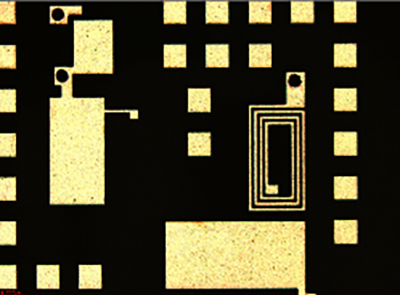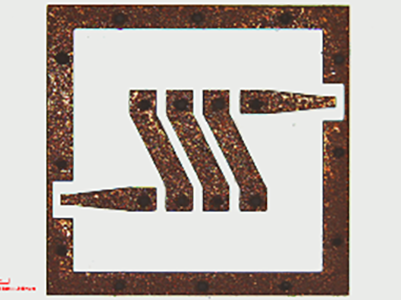What's New at Georgia Tech Packaging: Ultra-thin High-Q RF Inductors
Sep 22, 2016 —

Georgia Tech and its industry partners have demonstrated major advances in glass-based high-Q inductors in thickness and Quality Factor.
RF Inductors are the key building blocks in RF components such as filters, diplexers, matching networks, resonators and others. The emerging trend in LTE bands is for high functional density and performance requiring ultra-thin, small footprint and high Quality factor (Q) fabricated with precision.
The traditional RF modules are surface-mounted discrete inductors that are large and low performance. This led to the evolution of embedded inductors in LTCC or organic laminates.
In contrast to these approaches, Georgia Tech has been pioneering glass-based embedded RF inductors based on a new concept of ultra-thin 3D glass packages. Glass-based thin inductors are unique in achieving high Q with high inductance density with process precision and at low cost. These benefits are enabled by the low loss, high surface smoothness, superior dimensional stability for precision lithography and large-area panel-processing. Such high Q inductors, when integrated into glass-based RF modules, minimize parasitic issues while achieving miniaturization in X, Y and Z.
The Georgia Tech team has demonstrated major advances in glass-based high Q inductors in thickness and Quality factor. With spiral inductors, a Q of 40, with inductance density of 15 nH/mm², was achieved with 150 µm thick glass devices. Such spiral inductors are preferred because they can easily be integrated in build-up layers of organic RF laminates thus minimizing the need for through-substrate vias (TSVs). An example of embedded spiral inductors in ultra-thin 3D LTE diversity modules is shown in Figure 1 (top).
The ability to form through-vias in glass substrates, and the inherent low loss-tangent of glass substrates enables 3D inductors with inductance densities comparable to that of spiral inductors, but with high Q-factors (>150). Georgia Tech has recently demonstrated through-via based helical inductors in glass substrates with superior properties over spiral inductors in Q-factor (Figure 1 (bottom)). This approach is now extended to 50 µm glass.
Nano-materials such as nano-magnetics, are being pursued by the Georgia Tech team to enable the next generation of RF inductors for LTE bands. These materials show high permeability of 300 while retaining low loss, compared to micro-scale magnetic materials. By creating magnetic anisotropy, low loss is achieved up to ~2 GHz, allowing miniaturization of inductors in these frequency bands by more than 5X (up to 60-100 nH/mm²). Such inductors are being applied for power amplifier matching networks and RF chokes.
This research is being performed in partnership with many supply-chain and RF module companies.
For more information about Georgia Tech’s RF Program, please contact Prof. Rao Tummala at rao.tummala@ece.gatech.edu or Dr. P.M. Raj at raj.pulugurtha@prc.gatech.edu.
About the Authors
Min Suk Kim is a 4th year ECE student pursuing his PhD under the advisement of Prof. Rao Tummala. His research focus is on RF Packaging. mskim704@gatech.edu
Dr. Raj Pulugurtha is the Program Manager for Integrated Passive and Actives as well as High-Temp Electronics at Georgia Tech PRC. raj.pulugurtha@prc.gatech.edu
Dr. Rao Tummala is Director of Georgia Tech’s Packaging Research Center. He is also a Chaired Professor in ECE and MSE. rao.tummala@ece.gatech.edu.

Karen May - Marketing & Communications Coordinator - Packaging Research Center




